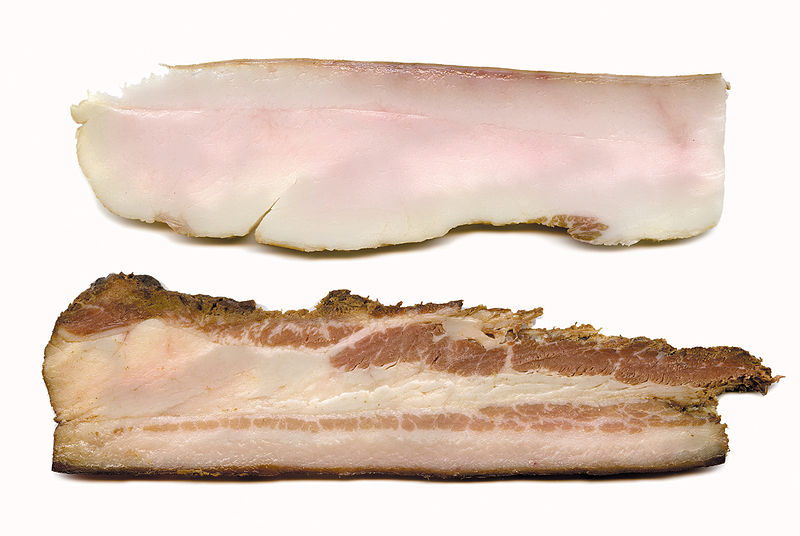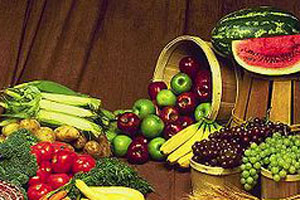
<a href="http://www.flickr.com/photos/anotherpintplease/3418925259/">Another Pint Please...</a>/Flickr
A dyed-in-the-wool vegetarian, I had always assumed that when it came to sustainability, my diet would beat the leather pants off that of my burger-crazy friends. But as I wrote in “Get Behind Me, Seitan,” (July/August 2010 issue of Mother Jones) some environmentalists and farmers claim that eating responsibly raised meat can actually be good for the planet. So who’s right? I posed the question to five smart people: Eating Animals author and novelist Jonathan Safran Foer, farmer and writer Joel Salatin, Diet for a Hot Planet author Anna Lappé, Bard College geophysicist Gidon Eshel, and food-waste expert Jonathan Bloom. They answered below and then responded to readers’ questions and comments during our three-day forum.
 Jonathan Safran Foer is the author of the acclaimed novels Everything Is Illuminated and Extremely Loud and Incredibly Close. His work has received numerous awards and has been translated into 36 languages. He lives in Brooklyn. Eating Animals will be available in paperback in September, 2010.
Jonathan Safran Foer is the author of the acclaimed novels Everything Is Illuminated and Extremely Loud and Incredibly Close. His work has received numerous awards and has been translated into 36 languages. He lives in Brooklyn. Eating Animals will be available in paperback in September, 2010.
No, vegetarianism is not always better for the planet than eating meat. There are farms that leave the environment in better shape than they found it, and if a meat eater were to only buy her meat from these farms, she would be more environmentally responsible than, say, a vegetarian who only ate asparagus from Chile. But this is to speak about exceptions, and unfortunately the conversation around meat seems always to want to go to such strange places. Reality is, more than 99 percent of the animals we eat in America come from factory farms, where environmental destruction is the rule. (The United Nations recently reported that animal farming is the number one cause of global warming, and one of the top two or three causes of every significant environmental problem on the planet, locally and globally.)
Generally speaking—and it is this “generally speaking” on which we base our laws and ethics—vegetarianism certainly is better for the planet. But maybe there’s a better question to ask. Is it better for the planet to eat less meat? I’ve heard numerous scientists say yes. I’ve heard ranchers of all kinds say yes. I’ve heard Anthony Bourdain say yes. In fact, in my three years of researching meat, I didn’t find a single person who was willing to argue that the planet wouldn’t be better if we ate less meat. We need to move away from the dichotomy of carnivore and vegetarian, and move toward a language that encourages people to act on the concerns they already have. If Americans gave up one serving of meat a week—say, Wednesday lunch—it would be the equivalent of taking five million cars off the road. So let’s start with those five million cars.
 Joel Salatin and his family own and operate Polyface Inc., a pasture-based multi-species relationally-oriented farm in Virginia’s Shenandoah Valley. The author of six books, he lectures widely about local food, ecological farming, and transparent business. The farm produces salad-bar beef, pastured poultry, pigaerator pork, forage-based rabbit, vegetables, and lumber. Everything is direct marketed to some 4,000 families, 50 restaurants, and 10 retail outlets.
Joel Salatin and his family own and operate Polyface Inc., a pasture-based multi-species relationally-oriented farm in Virginia’s Shenandoah Valley. The author of six books, he lectures widely about local food, ecological farming, and transparent business. The farm produces salad-bar beef, pastured poultry, pigaerator pork, forage-based rabbit, vegetables, and lumber. Everything is direct marketed to some 4,000 families, 50 restaurants, and 10 retail outlets.
1. From a nutrition/health standpoint, vegetarianism works for about a quarter of the population.
2. Everything is eating and being eaten: If you don’t believe it, go lie naked in your flower bed for three days and see what gets eaten.
3. Soil is most efficaciously built, both today and historically, with herbivores, perennials, and predation. Vegetarianism does not appreciate these principles.
4. No civilization or religion has ever sustained itself on vegetarianism. Historical Eastern vegetarian-type diets included copious amounts of insects and bugs. Grain harvesting still includes significant portions of bugs, although not as many.
5. All of the negatives associated with meat, dairy, and poultry consumption stem from non-pastured production models and/or monospeciation. This includes both nutritional problems (i.e. colon cancer from red meat) to environmental considerations (i.e. irrigation water required to grow grain). This also includes humane farming considerations. In addition, far more herbivores (bison) existed in the Americas 600 years ago than exist today: The notion that methane from burping herbivores causes climate change is both unscientific and ridiculous.
6. Because meat is nutrient-dense, any transportation contains a smaller carbon footprint percentage per nutrients than other foods.
7. Grasses are the lungs of the earth. They sequester more carbon than trees. In order to keep grass converting solar energy into decomposable biomass as efficiently as possible, it must be grazed routinely to restart the juvenile growth period. This pulsing is literally the heartbeat of the earth.
8. No natural ecosystem exists without animals. Humans are part of that ecosystem.
9. A more historically accurate and ecological meat consumption in the US would be twice as much grass-finished beef, a quarter the chicken, and about a third the pork. Beef and dairy do not require any grain because those animals are herbivores. The omnivores, historically, were scavengers, and consumption was limited to special occasions or royalty.
10. To the folks who think animals are sentient beings deserving equal status to humans, this notion indicates not an evolution toward cosmic convergence and connectedness, some heightened level of spiritual awareness; rather, it indicates an abnormal devolution toward disconnection, a jarring dissonance from ecological harmony.
Because of other commitments, Joel Salatin and Jonathan Safran Foer will not be able to respond to readers’ comments.
 Anna Lappé’s most recent book is Diet for a Hot Planet: The Climate Crisis at the End of Your Fork and What You Can Do About It (Bloomsbury). An active board member of Rainforest Action Network, Anna is a founding principal of the Small Planet Institute and Small Planet Fund.
Anna Lappé’s most recent book is Diet for a Hot Planet: The Climate Crisis at the End of Your Fork and What You Can Do About It (Bloomsbury). An active board member of Rainforest Action Network, Anna is a founding principal of the Small Planet Institute and Small Planet Fund.
Most of us can agree that much of the meat and dairy production in this country—and increasingly around the globe—is bad for the planet. As the Pew Commission on Industrial Farm Animal Production wrote, “the rapid ascendance of [this style of production] has produced unintended and often unanticipated environmental and public health concerns.”
Some of these consequences?
- Waste. In the US, industrial-scale meat production is responsible for 160 times the waste of the human population.
- Water pollution. Industrial meat operations are major air and water polluters, frequently in the line of fire for knowingly contaminating waterways. Consider, as just one of countless examples, poultry giant Tyson’s 2003 $5.5 million settlement of an EPA lawsuit for violations of the Clean Water Act by its Sedalia, Missouri, plant.
- “Dead zones.” Crop production for animal feed, especially corn, is largely responsible for the aquatic “dead zone” in the Gulf of Mexico that swells every year to the size of New Jersey, tied to farm runoff from synthetic nitrogen fertilizer overuse.
- Global warming. Globally, livestock factory farms eat up half of all corn and 90 percent of all soy, and the UN has blamed livestock (including those mismanaged on pasture) with being directly or indirectly responsible for as much as 18 percent of global greenhouse gas emissions.
- Deforestation and soil degradation. Seventy percent of all agricultural land in the world is tied up with livestock production. Pressure on land from livestock, for feed or pasture, has been the largest factor in Latin America’s deforestation.
- Wasted water. In the US, it takes 100 times more water to produce a unit of animal protein than the same amount of protein from grain. So Americans who eat a lot of grain-fed meat “drink” about 1000 more water in the food they eat than in the liquids they consume.
Here’s what else we know: Good nutrition tells us we can thrive on protein from plant-based sources and do so enjoying a diet rich with legumes, dark leafy greens, and a plethora of flavors and textures. And these fresh, unprocessed foods have significantly less environmental impact. We also know that the typical American consumes about twice as much protein as our bodies can even use.
Does this mean all vegetarian diets are better for the environment? Not necessarily. Show me a Coca-Cola guzzling, Velveeta chowing, Pop Tarts chomping, Pringles devouring “vegetarian” and I’ll show you someone who ain’t so environmentally friendly. The key for eating a planet-centered diet is to choose a diet that is plant-centered and that has you reaching for real foods, foods that are the least processed possible. And, if you choose to eat meat or dairy, source those foods from farms that integrate livestock using ecological methods. Like the organic farm I visited last week in Connecticut, whose primary products are the dozens of varieties of fruits and vegetables that their CSA members love every week, but whose goats, rabbits, chickens, and pigs play important roles, from helping with weed control to fertilizing the soil.
 Jonathan Bloom is a journalist and blogger who created WastedFood.com. His book on food waste, American Wasteland, will be published in September by Da Capo Press. He lives in Durham, N.C., with his wife, son, dog, composting worms and containers for leftovers.
Jonathan Bloom is a journalist and blogger who created WastedFood.com. His book on food waste, American Wasteland, will be published in September by Da Capo Press. He lives in Durham, N.C., with his wife, son, dog, composting worms and containers for leftovers.
Given how the majority of our meat is raised, it’s hard to answer the question “Is vegetarianism always better for the planet than eating meat?” with anything but a resounding ‘yes.’ From a food-waste perspective, though, there is some reason for doubt. For example, separate studies found that schoolchildren and supermarkets waste a higher percentage of vegetables and fruit than meat. Much higher.
A GAO study found that students wasted three times as much of their cooked vegetables as their meat. That shouldn’t surprise any of us who’ve actually been a kid before, tasted what the majority of schools call veggies, or observed how often schools serve their protein with a tasty (but unhealthy) golden coating. What seems even more germane to this forum is that students waste “meat alternates” at one-and-a-half times the rate of “meats.”
In the more universal supermarket setting, though, the USDA’s figures are truly surprising. Grocers have roughly twice as much unsold produce as meat. Meanwhile, data from the UK and American anecdotal evidence suggests the same trend holds true in homes and restaurants. No matter where this wasted food comes from, it impacts our environment. Squandering food means that the fossil fuels used to grow, process and ship these goods go for naught. Also harmful, the vast majority of food waste—97 percent—ends up in landfills, where it emits methane. And I don’t have to tell you folks that that greenhouse gas is more than 20 times as potent a heat-trapper as carbon dioxide.
But—and it’s a massive ‘but’—the higher loss rates of fruits and vegetables are not enough to overcome the inefficiency and massive foodprint of meat production. A study out of Johns Hopkins found that cattle are the real resource hogs, requiring seven kilograms of grain to produce one kilo of beef (pork and chicken were 4:1 and 2:1, respectively). And I’ve heard higher estimates, too. Plus, raising meat in factory-farm settings creates a harmful concentration of animal waste and a dangerous overreliance on antibiotics.
Still, most non-organic agriculture, with its reliance on petro-fertilizers and pesticides, impacts our environment. Plus, according to Christopher Weber and H. Scott Matthews’ study, “fruits/vegetables” and “cereals/carbs” produce more greenhouse gas emissions from transport than those from red meat, chicken or fish. Simply being a vegetarian doesn’t mean we don’t have a carbon foodprint, nor does it grant anyone a waste-all-you-want card. Yet, even more than vegetarians, we meat eaters must treasure our animal protein. Weber and Matthews found that red meat’s overall environmental impact dwarfs all other foods’. With meat, not only did something die for us, but that something was very inefficiently raised using many a natural resource.
 Gidon Eshel is a professor in the physics department of Bard College. He is the author of some 35 papers on many aspects of geophysics, applied mathematics, dynamics, paleo-oceanography and agriculture geophysics. He grew up on a dairy farm in an Israeli kibbutz and raised beef cattle in the Golan Heights for a number of years after his military service in Israel’s navy.
Gidon Eshel is a professor in the physics department of Bard College. He is the author of some 35 papers on many aspects of geophysics, applied mathematics, dynamics, paleo-oceanography and agriculture geophysics. He grew up on a dairy farm in an Israeli kibbutz and raised beef cattle in the Golan Heights for a number of years after his military service in Israel’s navy.
Almost always—there are exceptions, mostly related to what environmental objectives you wish your diet to achieve—what metrics you choose to evaluate your impact.
A diet consisting mostly of air-shipped highly perishable foods will be inferior to most ordinary mixed diets, including some containing red meat.
My work has shown that of the greenhouse gases emitted in order to feed the average American—equivalent to four to five tons of CO2 per person per year—one or two tons, 20 to 50 percent, can be averted by eating plants only. Can this play out differently? Absolutely. If you choose to eat nothing but fresh spinach in February in Nebraska, you will be responsible for more emissions than your Big-Mac-subsisting fellow average American. You can also violate this rule and end up emitting more greenhouse gases while eating plants only if you eat heavily processed industrially manufactured plant based food, like some brands of veggie burgers or vegan TV dinners.
In recent papers I have shown that at the same time, you can also reduce your land demands to about a half, and your discharge of reactive nitrogen—the root cause of most non-industrial water pollution in the US and most of the developed world—to about one-third of the average demands, by eating plants. But this, too, can be reversed if you compare heavily industrial plant based foods to diets heavy on chicken and similarly relatively efficient animal based items.
By most environmental measures, diets containing large numbers of your daily calories from coastal fish—herring, sardines, anchovy—are very hard to beat. But oats, lentils, or chickpeas easily outperform those fishes.
You may wish to emphasize in your dietary choices other social-environmental objectives, and some of those will clearly favor some animal based foods. For example, in the Hudson Valley, the Champlain Valley, and many other exurban agricultural or potentially agricultural areas within about 200 miles of major population areas, one may reasonably argue that preventing suburban sprawl is the deciding factor that should govern dietary choices. In that case, throughout most of those areas ripe for distraction by contractors, grazing cattle is superior to just about anything, because it is so land inefficient that it exerts strong counterpressure to development.
This is a complex question, and it cannot possibly have a single, universally valid answer; no one-size-fits-all here, and no catchy sound bites and buzzwords can do justice to the topic.













